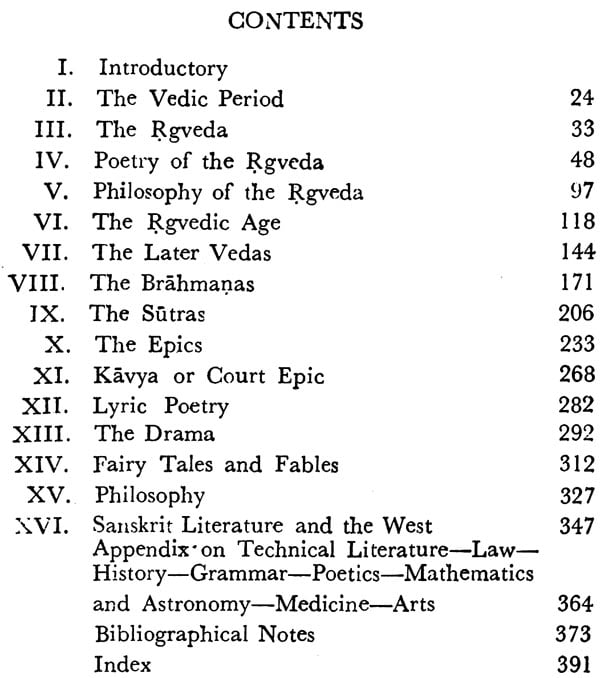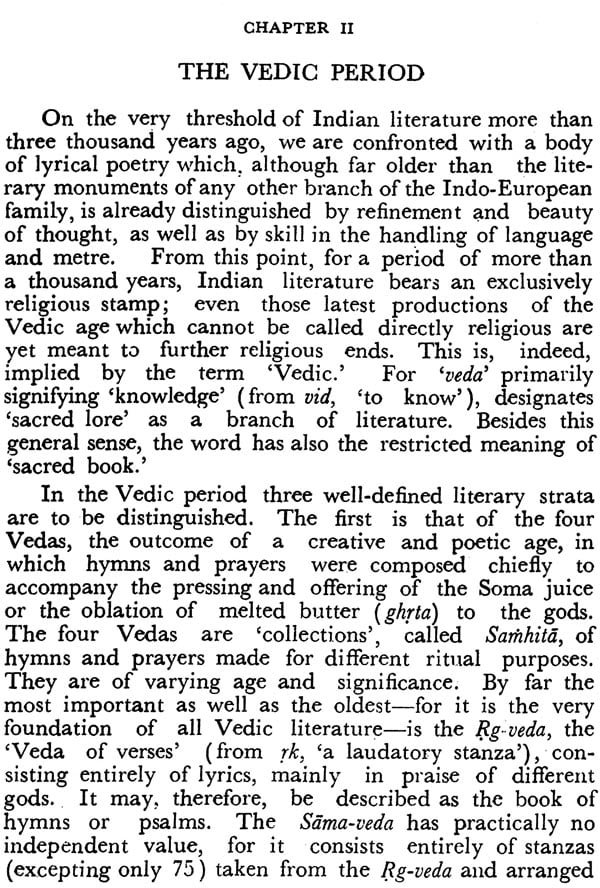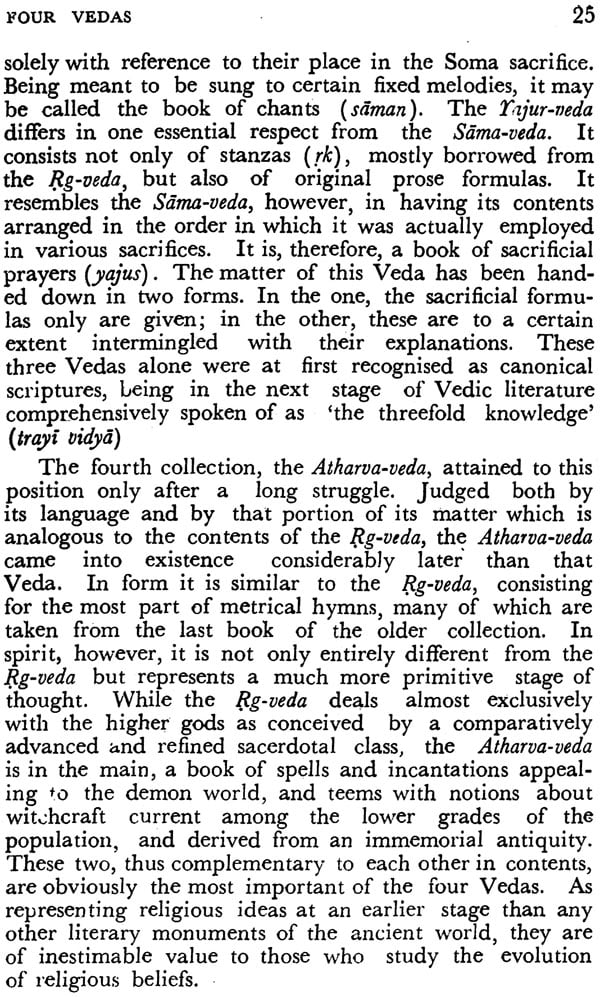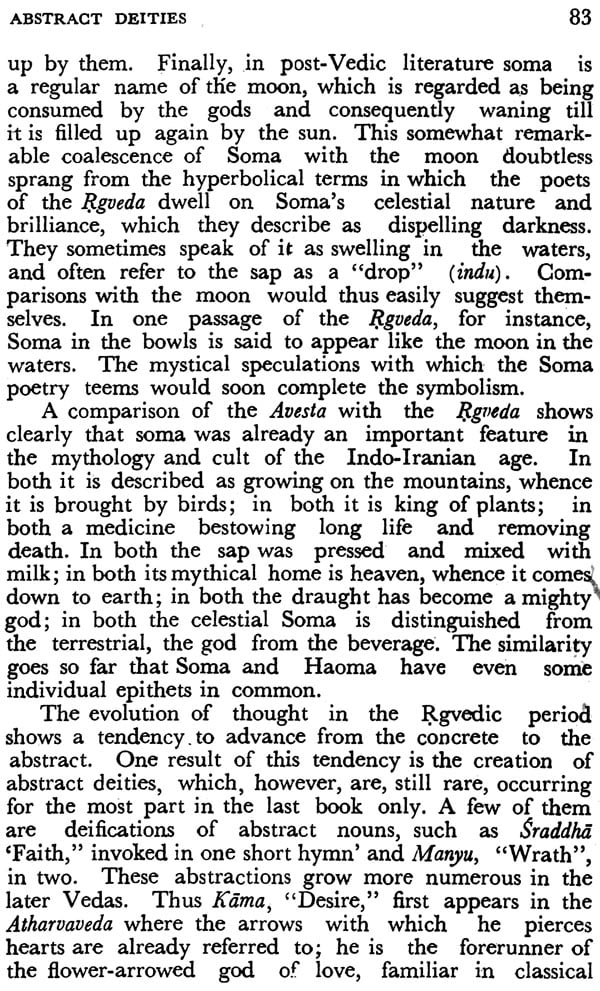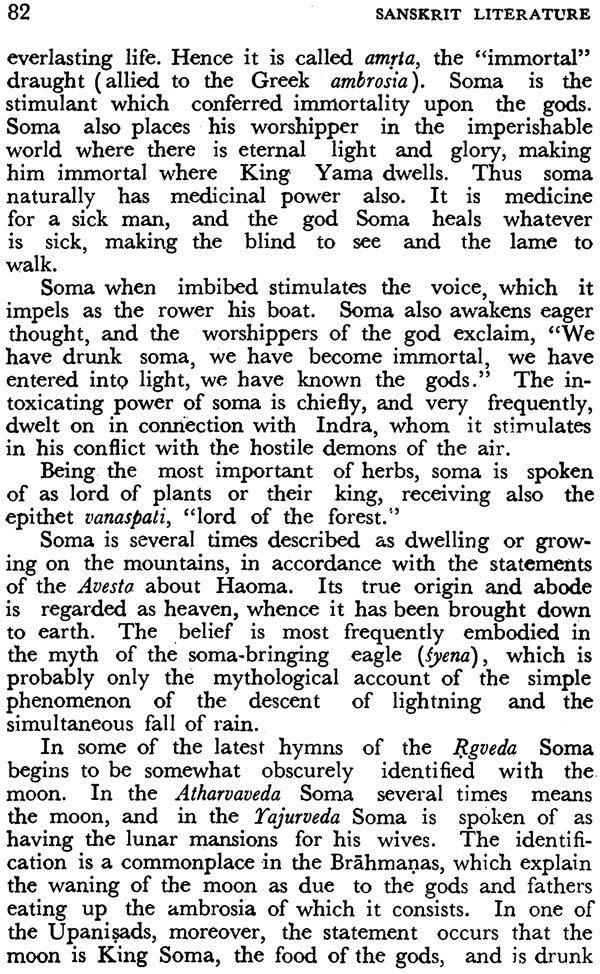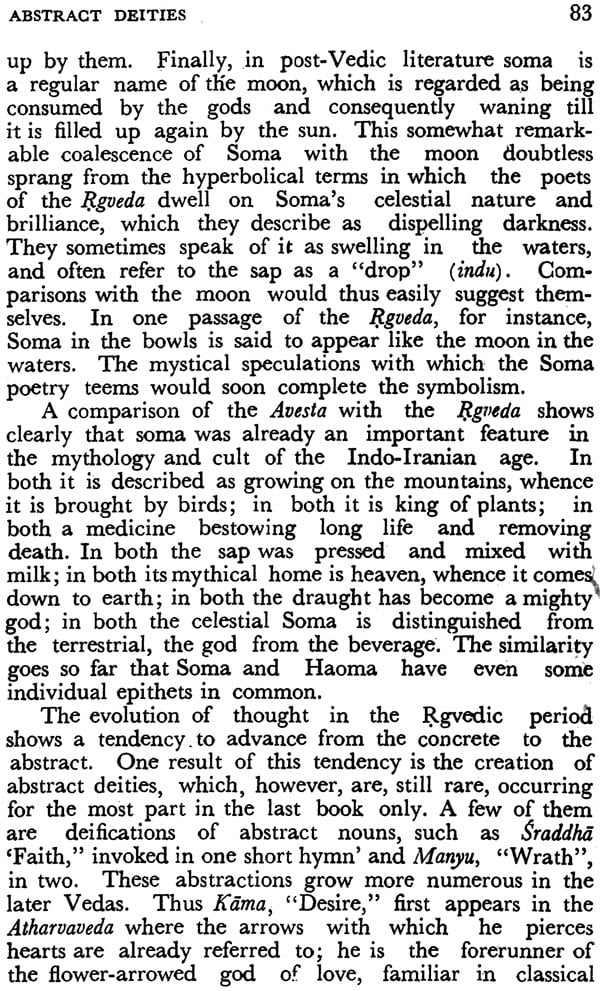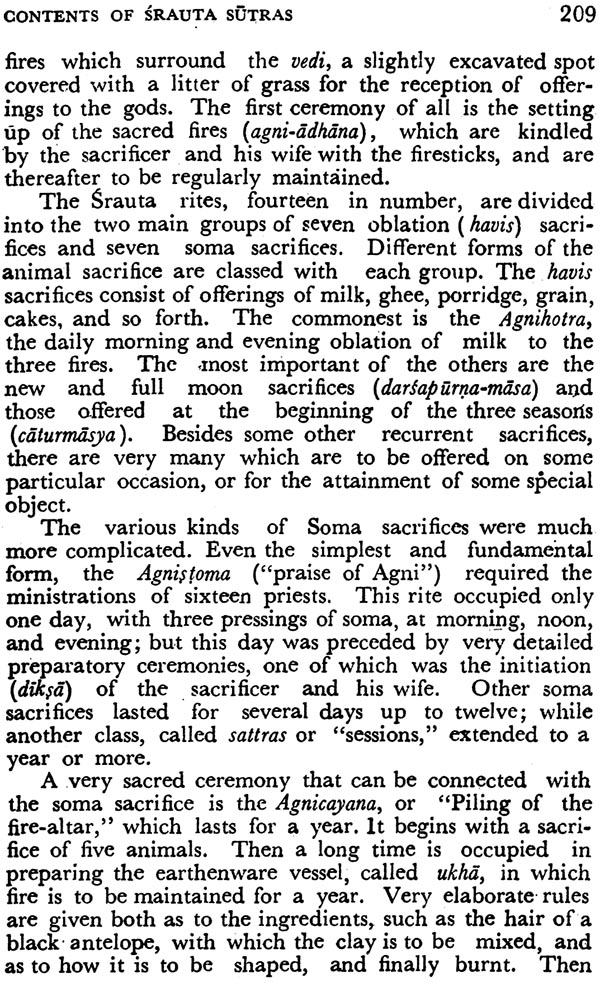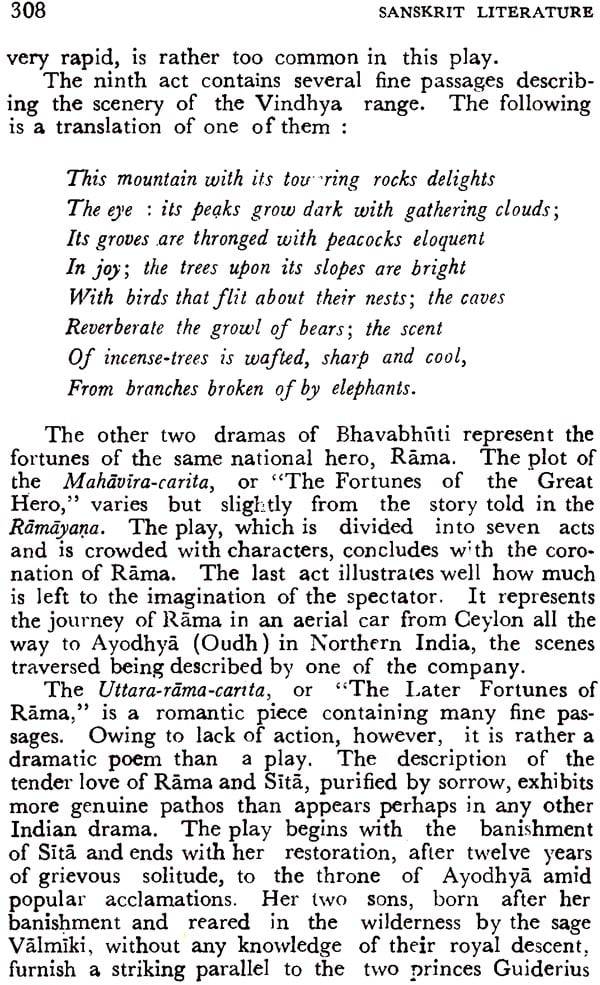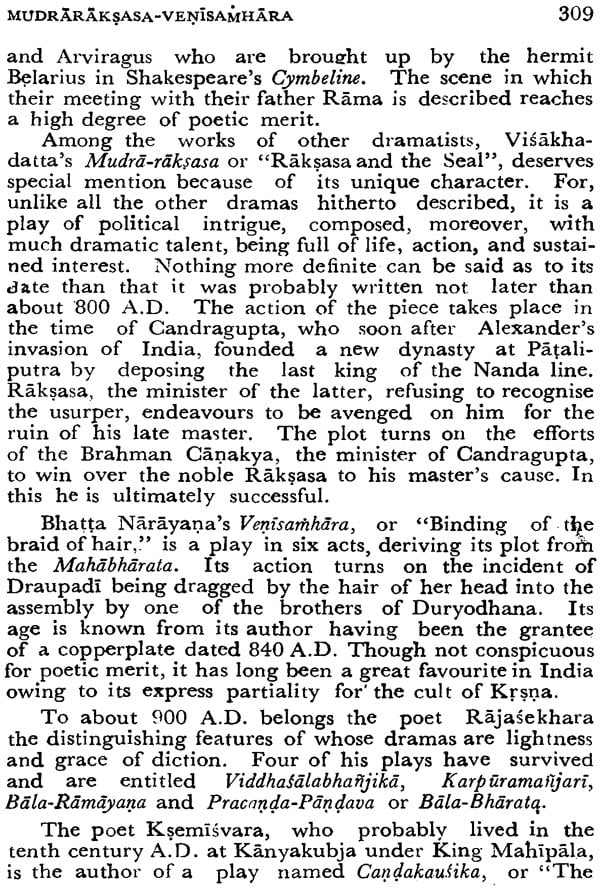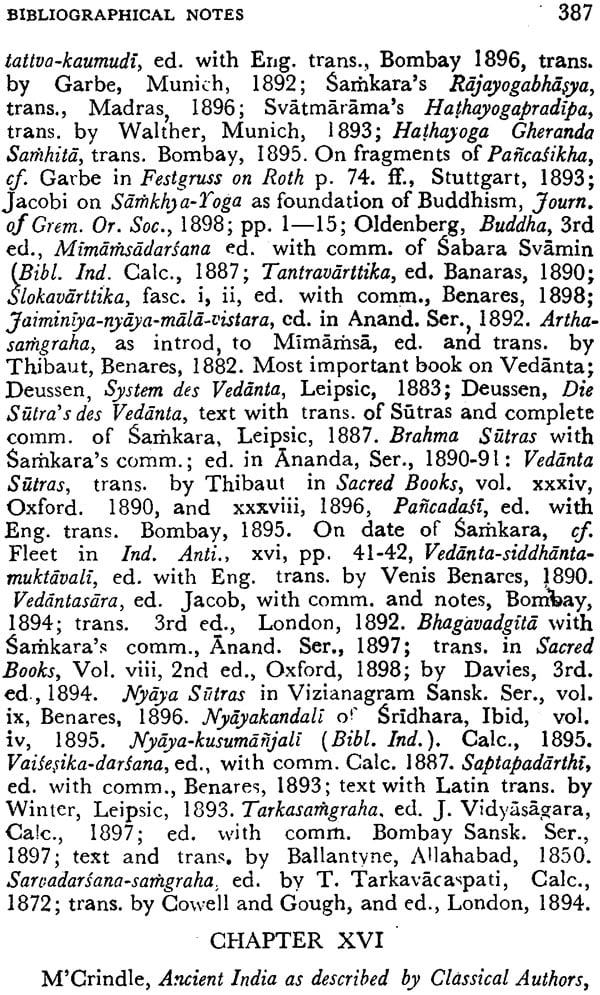
A History of Sanskrit Literature
Book Specification
| Item Code: | NBA048 |
| Author: | Arthur A. Macdonell |
| Publisher: | MOTILAL BANARSIDASS PUBLISHERS PVT. LTD. |
| Language: | ENGLISH |
| Edition: | 2022 |
| ISBN: | 9788120800953 |
| Pages: | 410 |
| Cover: | PAPERBACK |
| Other Details | 7.00 X 5.00 inch |
| Weight | 280 gm |
Book Description
The work presents a complete history of Sanskrit literature in a condensed and succinct form. It embodies a general study of the Vedic, Epic, Puranic, Classical and Philosophical Literature. It sheds light. on the life and thought of Ancient and Medieval India as reflected in the literary productions of those periods. Through the brief epitome given in the Appendix on Technical Literature including Law, Science and Arts it provides information both interesting and instructive. The bibliographical notes and index appended at the end add to the value and render the work most useful to the reader. Even in this age of advanced historiography when even the outstanding researches of eminent antiquarians have become outdated, the utility of this small work has not diminished by the passing away of the three quarters of a century.
ARTHUR ANTHONY MACD °NELL ( 1854- 1930), born in India was educated at Gottingen University. He matriculated in 1876 at Corpus Christi College, Oxford, and gained a three scholarships for German, Chinese, and the Boden Scholarship for Sanskrit. He graduated with classical honours in 1880 and was appointed Taylorian Teacher of Ger-man at Oxford. In 1883 he obtained his Ph.D. from the University of Leipzig, and then became Deputy Professor of Sanskrit at Oxford in 1888, and Boden Professor of Sanskrit in 1899. He edited various Sanskrit texts, wrote a grammar, compiled a dictionary, and published a Vedic grammar, a Vedic Reader, and a work on. Vedic Mythology; he also wrote a history of Sanskrit.
Among his works include A History of Sanskrit Literature, The Brhad-Devata Attributed to Saunaka : A Summary of the Deities and Myths of the Rgveda-critically edited in the original Sanskrit with an introduction and seven appendices and translated into English with critical and illustrative notes, A Vedic Grammar for Students; History of Vedic Mythology, A Practical Sanskrit Dictionary with Transliteration, Accentuation, and Etymologiacal Analysis, A Sanskrit Grammar for Students, and A Vedic Reader for Students.
It is undoubtedly a surprising fact that down to the present time no history of Sanskrit literature as a whole has been written in English. For not only does that literature possess much intrinsic merit, but the light it sheds on the life and thought of the population of our Indian Empire ought to have a peculiar interest for the British nation. Owing chiefly to the lack of an adequate account of the subject, few, even of the young men who leave these shores every year to be its future rulers, possess any connected information about the literature in which the civilisation of Modern India can be traced to its sources, and without which that civilisation can-not be fully understood. It was, therefore, with the greatest pleasure that it I accepted Mr. Gosse's invitation to contribute a volume to this series of Literatures of the World; for this appeared to me to be a peculiarly good opportunity for diffusing information on a subject in which more than twenty years of continuous study and teaching had instilled into me an ever-deepening Interest.
Professor Max Muller's valuable History of Ancient Sanskrit Literature is limited in its scope to the Vedic period. It has long been out of print; and Vedic re-search has necessarily made great strides in the forty years which have elapsed since its publication.
The only book accessible to the English reader on the history of Sanskrit literature in general has hitherto been the translation of Professor Weber's Academical Lectures on Indian Literature, as delivered nearly half a century ago at Berlin. The numerous and often very lengthy notes in this work supply the results of research during the next twenty-five years; but as these notes often modify, or even cancel, the statements of the unaltered original text of 1852, the result is bewildering to the student. Much new light has been thrown on various branches of Sanskrit literature since 1878, when the last notes were added to this translation, which, moreover, is not in any way adapted to the wants of the general reader. The only work on the subject appealing to the latter is the late Sir M. Monier Williams's Indian Wisdom. That book, however, although it furnishes, in addition to the translated specimens, some account of the chief departments of Sanskrit literature, is not a history. There is thus distinctly a twofold demand in this country for a history of Sanskrit literature. The student is in want of a guide setting forth in a clear and trustworthy manner the results of research down to the present time, and the cultivated English reader looks for a book presenting in an intelligible end attractive form information which Inuit have a special interest to us owing to our close relations with India.
To lack of space, no less than to the scope of the present series, is due the exclusion of a, full account of the technical literature of law, science, and art which contains much that would interest even the general reader; but the brief epitome given in the Appendix will, I hope, suffice to direct the student to all the most important authorities.
As to the bibliographical notes, I trust that, though necessarily restricted in extent, they will enable the student to find all further information he may want on matters of detail; for instance, the evidence for approximate dates, which had occasionally to be summarily stated even in the text.
In writing this history of Sanskrit literature, I have dwelt more on the life and thought of Ancient India; which that literature embodies, than would perhaps have appeared necessary in the case of a European literature. This I have done partly because Sanskrit literature, as representing an independent civilisation entirely different from that of the West, requires more explanation than most others; and partly because, owing to the remarkable continuity of Indian culture, the religious and social institutions of Modern India are constantly illustrated by those of the past.
Besides the above-mentioned works of Professors Max Muller and Weber, I have made considerable use of Professor L. von Schroeder's excellent Indians Literature and culture (1887). I have further consulted in one way or another nearly all the books and monographs mentioned in the bibliographical notes. Much of what I have written is also based on my own studies of Sanskrit literature.
All the quotations which I have given by way of illustration I have myself carefully selected from the original works. Excepting the short extracts on page 281 from Cowell and Thomas's excellent translation of the Harsacarita, all the renderings of these are my own. In my versions of Rgvedic stanzas I have, however, occasionally borrowed a line or phrase from Griffith. Nearly all my renderings are as close as the use of metre permits. I have endeavoured to r(.produce, as far as possible, the measures of the original, except in the quotations from the dramas, where I have always employed blank verse. I have throughout refrained from rhyme, as misrepresenting the original Sanskrit.
In the transliteration of Sanskrit words' I have been guided by the desire to avoid the use of letters which might mislead those who do not know Sanskrit. I have, therefore, departed in a few particulars from the system on which Sanskrit scholars are now almost unanimously agreed, and which I otherwise follow myself. Hence for c and ch I have written ch and chh respectively, though in the rare cases where these two appear in combination I have retained cch (instead of chchh). I further use sh for the lingual ,s-, and c for the palatal 1 and ri for the vowel r. I have not thought it necessary to distinguish the guttural ri and the palatal 71 by diacritical marks, simply printing, for instance, anga and Mancha. The reader who is unacquainted with Sanskrit will thus pronounce all words correctly by simply treating all the consonants as in English, remembering only that the vowels should be sounded as in Italian, and the e and o are always long.
I am indebted for some suggestions to my friend Mr. F.C.S. Schiller, Fellow and Tutor of Corpus Christi College, who looked through the final proof of the chapter on Philosophy. To my pupil Mr. A. B. Keith, Boden Sanskrit scholar and Classical scholar of Balliol, who has read all the final proofs with great care, I owe not only the removal of a number of errors of the press, but also several valuable criticisms regarding matters of fact.
**Contents and Sample Pages**
